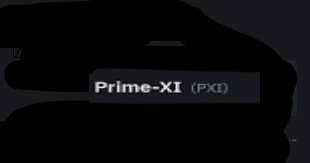Prime-XI (PXI): The Ultimate Guide to This Cryptocurrency
Table of Contents

Prime-XI is a Mineable Token. Are you curious about expanding your crypto portfolio with other mineable tokens or alternative coins? At Niftyfinances, you’ll find in-depth information, guides, and the latest updates on various promising crypto projects. Whether you’re a miner or an enthusiast looking for unique opportunities, Niftyfinances is your go-to platform to discover what’s next in decentralized finance!
Prime-XI (PXI) is a digital currency that was launched to provide an efficient, secure, and decentralized payment system. It utilizes blockchain technology to enable fast transactions while maintaining privacy. Understanding PXI can help you navigate the crypto space. In this guide, we’ll cover its history, how it works, how to mine it, and best practices for buying and storing PXI securely.

What is Prime-XI (PXI)?
Prime-XI (PXI) is a decentralized cryptocurrency designed to provide secure, fast, and low-cost digital transactions. It leverages blockchain technology to ensure transparency, security, and decentralization, allowing users to transfer funds without the need for intermediaries like banks. Prime-XI aims to be an accessible and efficient digital currency for everyday transactions, international payments, and financial freedom.
- Secure Transactions – Uses cryptographic technology to protect transactions from fraud and unauthorized access.
- Blockchain Transparency – Every transaction is recorded on the blockchain, ensuring accountability and preventing manipulation.
- Fast and Low-Fee Transfers – Designed for quick confirmations and minimal fees, making it an efficient option for global payments.
- Decentralized Network – Eliminates central control, giving users full ownership of their funds.

How Does Prime-XI (PXI) Work?
Prime-XI (PXI) operates as a decentralized cryptocurrency that ensures secure, fast, and low-cost transactions through blockchain technology. Prime-XI is designed to provide a secure, decentralized, and efficient digital currency for everyday transactions and financial freedom. Here’s how it functions:
1. Blockchain Ledger
- Prime-XI uses a public blockchain to store transaction data securely and transparently.
- Every transaction is recorded on the ledger, preventing fraud and ensuring accountability.
2. Proof-of-Work (PoW) Algorithm
- Prime-XI uses the PHI1612 algorithm for mining, which is a hybrid PoW algorithm designed for efficiency and security.
- Miners solve cryptographic puzzles to validate transactions and secure the network.
- PHI1612 is optimized for lower energy consumption compared to traditional PoW systems like Bitcoin’s SHA-256.
3. Decentralization
- There is no central authority controlling the network.
- Transactions are verified by miners and recorded on the blockchain, ensuring independence from banks or governments.
4. Transaction Speed & Fees
- Prime-XI offers faster confirmations than traditional banking systems, reducing wait times for payments.
- Low transaction fees make it a cost-effective alternative for global transfers and micropayments.

Mining Prime-XI (PXI): Step-by-Step Guide
Mining Prime-XI (PXI) involves several key steps to ensure efficient and profitable operations. By following these steps and staying informed about the latest developments in Prime-XI mining, you can establish an effective and efficient mining operation. Here’s a comprehensive guide to get you started:
1. Choosing the Right Mining Equipment
- PHI1612 Algorithm: Prime-XI utilizes the PHI1612 mining algorithm, which is designed to be ASIC-resistant.
- Hardware Requirements:
- Graphics Processing Units (GPUs): High-performance GPUs, particularly NVIDIA models, are recommended for mining PXI.
- ASIC Miners: Due to the ASIC-resistant nature of PHI1612, specialized ASIC hardware is not suitable for mining PXI.
2. Setting Up Your Mining Software
- Compatible Mining Software: Select software that supports the PHI1612 algorithm. Notable options include:
- WildRig-Multi: Supports both NVIDIA and AMD GPUs.
- Z-Enemy Miner: Optimized for NVIDIA GPUs.
- cpuminer-opt: Suitable for CPU mining, though less efficient than GPU mining.
- Configuration Steps:
- Download: Obtain the latest version of your chosen mining software from a reputable source.
- Configuration File: Edit the configuration file to include your wallet address and mining pool details.
- Optimization: Adjust settings such as intensity and thread concurrency to match your hardware capabilities.
3. Joining a Mining Pool
- Benefits: Pooling resources with other miners can lead to more consistent and predictable rewards.
- Recommended Mining Pools: As of now, specific mining pools for Prime-XI (PXI) are not widely documented. It’s advisable to research and join a reputable pool that supports PHI1612 algorithm mining.
4. Starting the Mining Process
- Initiate Mining: Run your configured mining software to begin the mining process.
- Monitoring:
- Hash Rate: Regularly check your mining performance to ensure optimal operation.
- System Stability: Monitor system temperatures and performance to prevent overheating and hardware damage.
- Optimization Tips:
- Energy Efficiency: Utilize hardware with high hash-per-watt efficiency to maximize profitability.
- Cooling Solutions: Implement adequate cooling systems, such as additional fans or liquid cooling, to maintain optimal hardware temperatures.
How to Buy Prime-XI (PXI)?
Acquiring Prime-XI (PXI) involves several steps to ensure a secure and efficient transaction. By following these steps and maintaining diligent security practices, you can navigate the process of acquiring Prime-XI (PXI) effectively. Here’s a detailed guide to assist you:
Finding a Reliable Exchange
As of 2025, Prime-XI (PXI) is not widely available on major cryptocurrency exchanges. Platforms like Binance and Coinbase do not support PXI trading. However, decentralized exchanges (DEXs) offer an alternative avenue for acquiring PXI.
Decentralized Exchanges (DEXs):
- Overview: DEXs allow peer-to-peer cryptocurrency transactions without a central authority.
- How to Use DEXs for PXI:
- Connect a Wallet: Utilize a compatible cryptocurrency wallet (e.g., MetaMask) to interact with DEXs.
- Access the DEX: Navigate to a DEX platform that lists PXI. Ensure the platform is reputable and has sufficient liquidity for PXI trading pairs.
- Trade: Exchange your existing cryptocurrencies (such as Ethereum or USDT) for PXI directly through the DEX interface.
Considerations:
- Liquidity: DEXs may have varying liquidity levels for PXI, affecting the ease and price of transactions.
- Security: While DEXs offer enhanced privacy, it’s crucial to ensure you’re using a secure and reputable platform to avoid potential risks.
Creating an Account
For Centralized Exchanges (if available):
- Registration: Sign up on the chosen exchange by providing necessary details such as email and password.
- Identity Verification: Some platforms may require Know Your Customer (KYC) procedures, including submitting identification documents.
- Security Measures: Enable two-factor authentication (2FA) to add an extra layer of security to your account.
For Decentralized Exchanges:
- Wallet Setup: Since DEXs operate without central accounts, set up a secure cryptocurrency wallet compatible with the DEX.
- Private Keys: Safeguard your wallet’s private keys or seed phrases, as losing them can result in the permanent loss of access to your funds.
Depositing Funds
Using Decentralized Exchanges:
- Cryptocurrency Deposits: Ensure your wallet holds a cryptocurrency supported by the DEX (e.g., Ethereum) to facilitate the exchange for PXI.
- Network Fees: Be mindful of network transaction fees, which can vary based on blockchain congestion.
Placing an Order
- Market Orders: Execute a trade immediately at the current market price.
- Limit Orders: Set a specific price at which you wish to buy PXI; the trade will execute once the market reaches your desired price.
- Slippage Considerations: In markets with low liquidity, be cautious of slippage, where the executed price differs from the expected price.
Withdrawing to a Secure Wallet
- Immediate Withdrawal: After purchasing PXI, transfer your funds to a personal wallet to maintain control over your assets.
- Security Practices:
- Use Hardware Wallets: For enhanced security, consider storing your PXI in a hardware wallet.
- Backup: Keep backups of your wallet’s private keys or seed phrases in secure, offline locations.
Considerations:
- Stay Informed: Regularly check for updates regarding PXI’s availability on various exchanges, as listings can change over time.
- Exercise Caution: Always conduct thorough research before engaging with any exchange or platform to ensure its legitimacy and security.
How to Store Prime-XI (PXI) Securely?
Storing your Prime-XI (PXI) securely is essential to protecting your investment from theft, hacking, and loss. Cryptocurrency security involves multiple layers, including choosing the right wallet, protecting private keys, and enabling additional security features. This guide will walk you through the best practices to ensure that your PXI holdings remain safe.
Choosing the Right Wallet
Selecting the right wallet is the first step in securing your Prime-XI. The choice of wallet depends on your needs—whether you prioritize security, convenience, or a combination of both.
Hardware Wallets (Best Security Option)
- Recommended for long-term storage to keep PXI safe from hacks.
- Stores private keys offline, making it resistant to malware and cyber threats.
- Popular hardware wallets like Ledger Nano S/X and Trezor may support PXI if compatible.
- Offers backup and recovery options in case the device is lost or damaged.
Desktop or Mobile Wallets (Convenience)
- Desktop Wallets – Software installed on your computer, providing full control over private keys.
- Mobile Wallets – Useful for on-the-go transactions but less secure than hardware wallets.
- Ensure the wallet you choose supports PXI and is from an official, trusted source.
Paper Wallets (Cold Storage Alternative)
- A printed copy of your private keys and wallet address that is stored offline.
- Free from cyber threats but must be stored securely (e.g., in a safe or safety deposit box).
Securing Your Private Keys
Your private key is the most important security element of your wallet—losing it means losing access to your PXI.
- Never Share Your Private Keys
- Your private keys should never be shared with anyone—not even with customer support teams or supposed “official” representatives.
- Be cautious of phishing scams that attempt to trick you into revealing your keys.
- Backup Your Private Keys in Secure Locations
- Store multiple copies in separate, secure locations (e.g., different safes or trusted individuals).
- Use offline storage methods, such as writing them down or using an encrypted USB drive.
- If using a digital backup, encrypt the file and store it on an air-gapped device (a device never connected to the internet).
- Use a Multi-Signature Wallet (If Available)
- A multi-signature wallet requires multiple private keys to authorize transactions, adding an extra layer of security. This ensures that even if one key is compromised, your funds remain safe.
Enabling Extra Security Measures
Taking additional precautions can reduce the risk of hacks, phishing, and unauthorized access.
- Strong Passwords – Use complex passwords with a mix of uppercase, lowercase, numbers, and special characters.
- Two-Factor Authentication (2FA) – Enable 2FA on any exchange or wallet service that offers it.
- Beware of Phishing Scams – Always double-check website URLs before entering login credentials. Avoid clicking on suspicious links in emails or messages.
- Regular Security Updates – Keep your wallet software updated to protect against vulnerabilities.
What to Do If Your Wallet Is Compromised?
Despite following best security practices, hacks and compromises can still occur. If you suspect unauthorized access to your wallet:
Immediate Steps to Take:
- Transfer Your Funds to a secure wallet immediately before further damage occurs.
- Change Your Passwords for all linked accounts, including your email and exchange accounts.
- Revoke Access to any suspicious connections if using a software wallet with external integrations.
Reporting the Incident
- If your wallet provider has a support team, report the issue immediately.
- If funds were stolen through an exchange breach, notify the exchange and check if they provide reimbursement.
For maximum security, a hardware wallet combined with offline backups is the best way to store PXI. However, if you need regular access, a desktop or mobile wallet with strong security measures in place can be a practical choice. Always stay vigilant and prioritize wallet security to protect your digital assets.
Current Status and Future of Prime-XI (PXI)
Prime-XI (PXI) is a lesser-known cryptocurrency that has been around for several years but has struggled to gain traction in the competitive crypto market. Its current status reflects challenges in liquidity, development activity, and overall adoption. However, its future remains uncertain, depending on potential community efforts and renewed developer interest.
Market Performance
1. Trading Volume and Price Trends
As of 2025, Prime-XI (PXI) has a low market capitalization and minimal daily trading volume. According to market data:
- Current Price: Approximately $0.000983 per PXI
- 24-Hour Trading Volume: Extremely low, indicating a lack of active trading interest
- Market Capitalization: Hard to determine due to low liquidity
Compared to larger cryptocurrencies like Bitcoin and Ethereum, PXI remains an illiquid asset, meaning it can be difficult for traders to buy or sell large amounts without significantly impacting the price.
2. Availability of Exchanges
PXI is listed on a limited number of cryptocurrency exchanges, making it harder for new investors to acquire and trade it. Some challenges include:
- Low liquidity: The lack of trading activity makes it difficult to execute buy or sell orders without significant price fluctuations.
- Few exchange listings: While some small exchanges may support PXI, major platforms like Binance, Coinbase, and Kraken do not list them.
- Risk of delisting: Cryptocurrencies with low activity and trading volume are often removed from exchanges due to low demand.
For users interested in acquiring PXI, decentralized exchanges (DEXs) might be an alternative, but the lack of liquidity remains a concern.
Development Activity
1. Lack of Recent Updates
One of the biggest concerns for Prime-XI is the absence of ongoing development. While many successful blockchain projects regularly release updates, introduce new features, or maintain active developer communities, PXI has not shown significant progress in recent years.
Signs of stagnation include:
- No recent GitHub activity or updates to its source code
- Lack of new roadmap announcements from the development team
- No active communication channels such as developer blogs or social media updates
2. Absence of Developer Support
A cryptocurrency project’s long-term success depends on a strong development team. Without active developers, issues like security vulnerabilities, outdated code, and lack of innovation can hinder growth. The lack of transparency regarding PXI’s development team makes it difficult to gauge whether there are plans to improve or update the project.
Future Prospects
1. Challenges to Overcome
For Prime-XI to remain relevant in the crypto space, several challenges must be addressed:
- Increase in Adoption: More users need to buy, trade, and use PXI for practical applications.
- Developer Revival: A committed development team must step in to maintain and upgrade the network.
- Exchange Expansion: Listing on more reputable exchanges could improve liquidity and accessibility.
- Community Engagement: Active community-driven efforts could help promote awareness and adoption.
2. Opportunities for Growth
While the current outlook may seem bleak, there are still possibilities for a revival of PXI if the right actions are taken:
- Rebranding or Relaunching: A new development team could take over and introduce fresh innovations.
- Integration with DeFi & NFTs: If PXI finds a niche in decentralized finance (DeFi) or NFTs, it could attract new interest.
- Grassroots Movement: If a dedicated community forms around PXI, it could help drive interest and utility.
At this point, Prime-XI is in a difficult position, with low trading volumes, limited exchange listings, and no visible development activity. However, in the crypto world, projects can sometimes be revived through community efforts, technological upgrades, or strategic partnerships.
For now, investors should approach PXI with caution, keeping in mind the risks of low liquidity and uncertain development. If a revitalization effort emerges, it could breathe new life into the project, but without such efforts, PXI may continue to fade into obscurity. While its adoption and development have slowed, it remains an option for crypto enthusiasts looking for alternatives to mainstream coins. If you’re interested in trading, mining, or holding PXI, be sure to research thoroughly and follow the best security practices.